

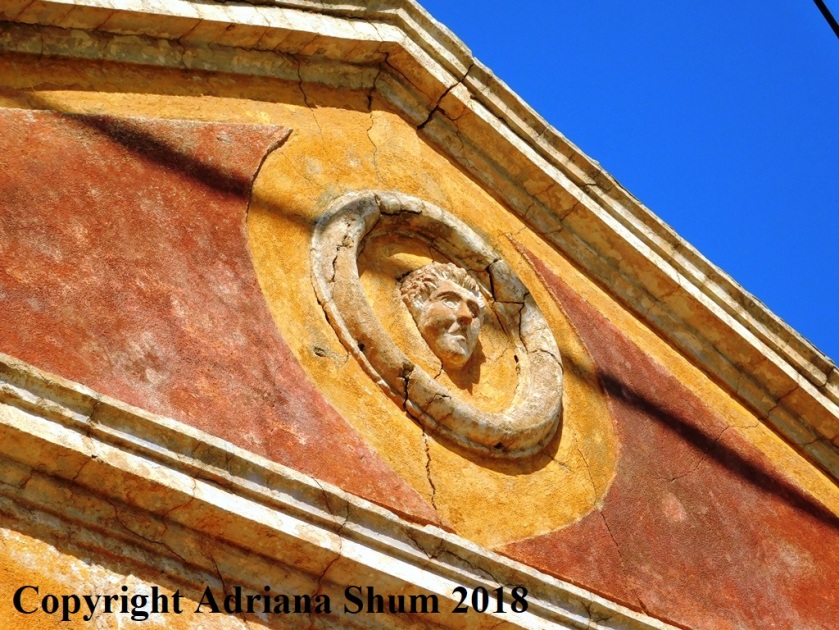






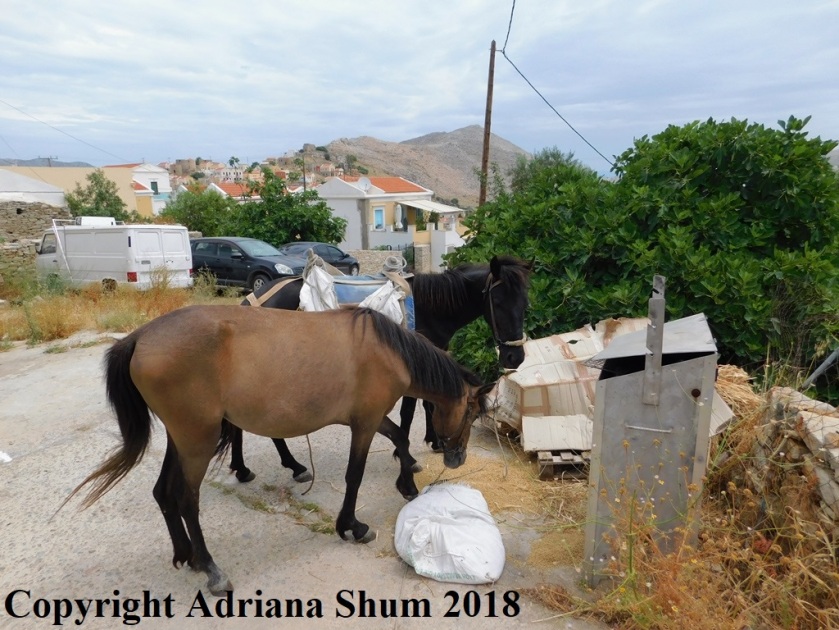
Symi is famous for its beautiful neo-classical houses. The pediments are adorned with all sorts of devices such as stars, crosses, concentric rings and, sometimes, faces. I spotted this one recently in Chorio, near the windmills.










Most of those package holiday companies have either dropped Symi from their listings as too expensive and awkward to get to (the shrinking ferry schedule is a self-fulfilling prophecy) or the companies themselves have disappeared, gobbled up in the eternal quest for ever cheaper ‘value for money’ deals that eventually became unsustainable.
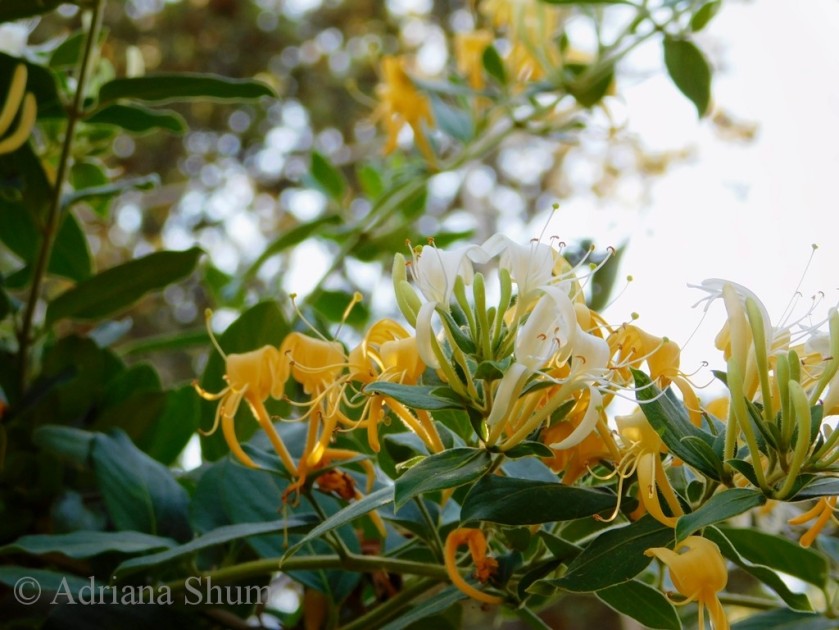
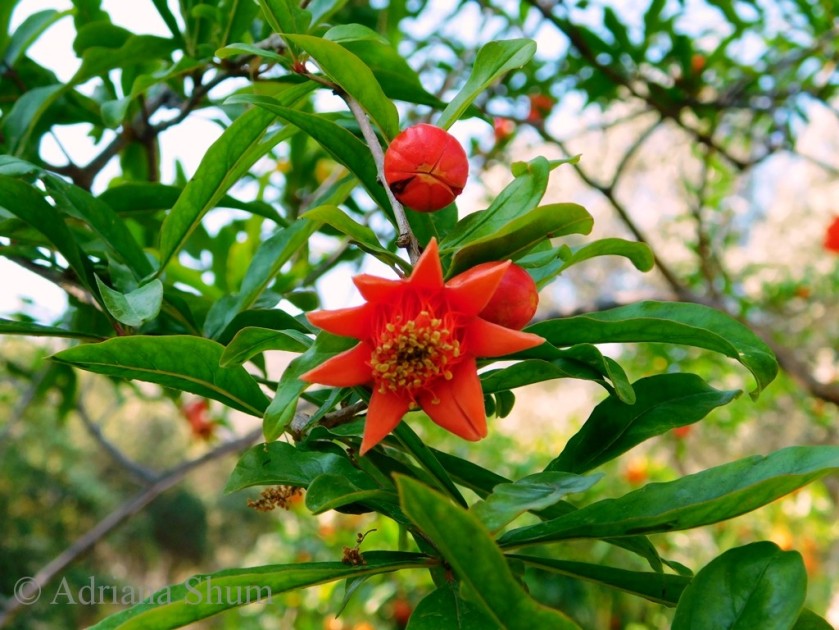


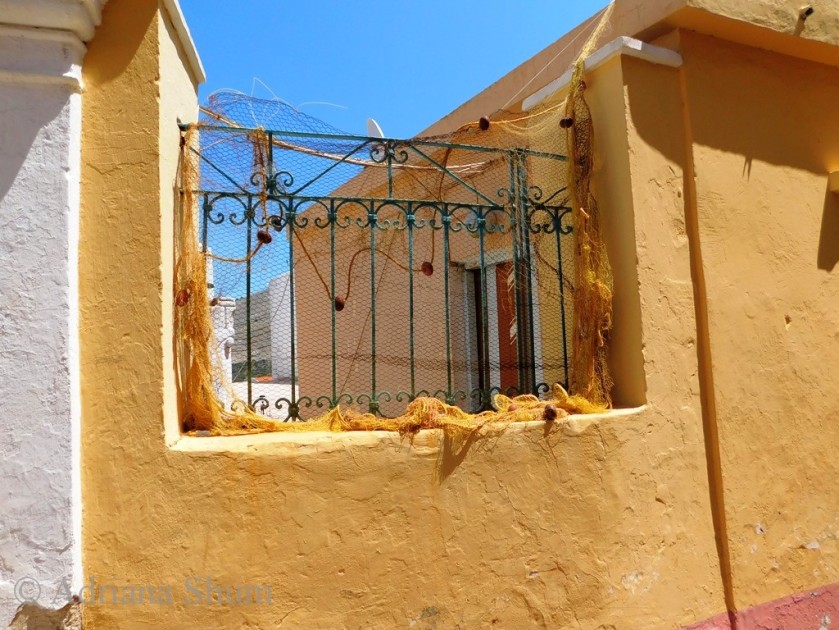


A band of thunder showers passed over Greece last week. Symi got off lightly with a few muddy sprinkles and a general clearing of the air. Rhodes and many parts of the Greek mainland as well as neighbouring Turkey had heavy downpours, enough, in some cases, to cause local flooding. We are unlikely to see any significant rain now until late October or even November. The Southern Aegean has one of the longest summer droughts in the Mediterranean. The last time Symi had rain strong enough to set the gutters flowing to fill cisterns was the end of February. It looks as though 2018 is going to be a very long hot dry summer.
The first Olympic Holiday people arrived on Symi last week, marking the beginning of the official tourist season. 25 years ago there were many package holiday companies servicing Symi, notable among them being Laskarina, Manos, Kosmar, Small World, Travel a la Carte and Hidden Greece. Accommodation was a mixture of restored traditional local houses, privately owned small studio and apartment developments designed to look just like Symi’s traditional houses and small pensions. The emphasis was on authentic island life, simple self-catering and lots of convivial dining in local tavernas. Symi’s tourist businesses timed their openings to coincide with these arrivals, knowing that there would be enough visitors staying on the island to provide them with customers in bars, cafes, tavernas, excursions and the like.
Now that certainty has gone. Most of those package holiday companies have either dropped Symi from their listings as too expensive and awkward to get to (the shrinking ferry schedule is a self-fulfilling prophecy) or the companies themselves have disappeared, gobbled up in the eternal quest for ever cheaper ‘value for money’ deals that eventually became unsustainable.
All inclusive packages to resort hotels in Rhodes are good for consumers who want to know exactly how much their holiday is going to cost and don’t really care if it is Greece, Spain, Egypt or Turkey as long as the sun shines, the pool is full and the food and drink bountiful and free. Unfortunately these packages are death to local economies as holiday guests seldom venture forth into the community, prices are pared down to the last cent so wages in these complexes are often below the legal minimum and limited local resources are stretched to breaking point.
Last summer Rhodes found itself in the previously unheard of situation of running out of water. So much water was being diverted to hotel complexes with their swimming pools, manicured lawns and unlimited showers that there was no water available for the locals. Villages and towns found themselves without water for days on end. A situation with which Symiots are only too familiar – this is why we all have cisterns – but for which Rhodes is poorly equipped.
Ironically, high value property owners who had invested significant sums in purchasing holiday homes and villas on the island found themselves seriously inconvenienced for the benefit of low value all inclusive holidaymakers whose tourist spend largely stayed in the pockets of the international holiday companies hosting their holidays. A state of affairs hardly likely to encourage further foreign investment.
That’s probably enough of the serious food for thought for today. If you are still reading, have a good week! Remember, you can always join in the discussion by commenting, or by emailing me here.
Regards,
Adriana
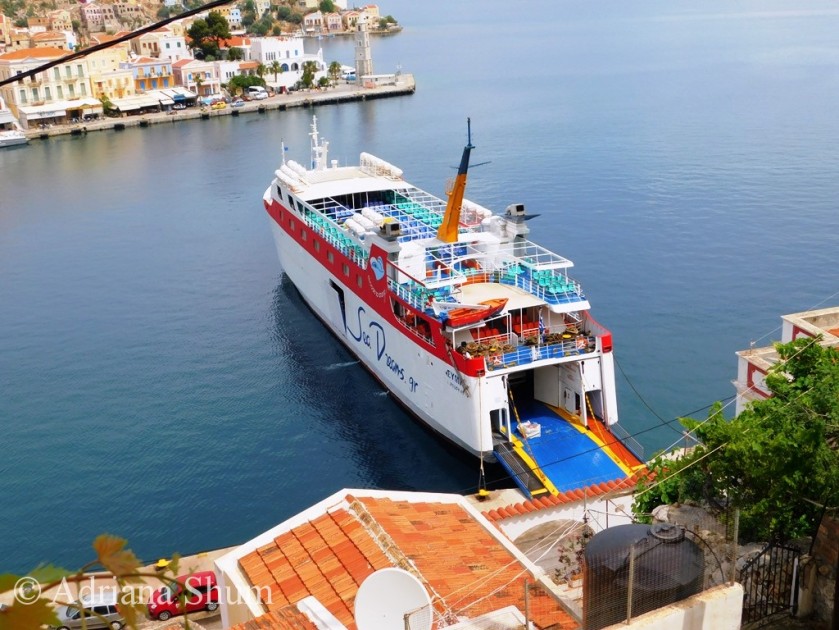




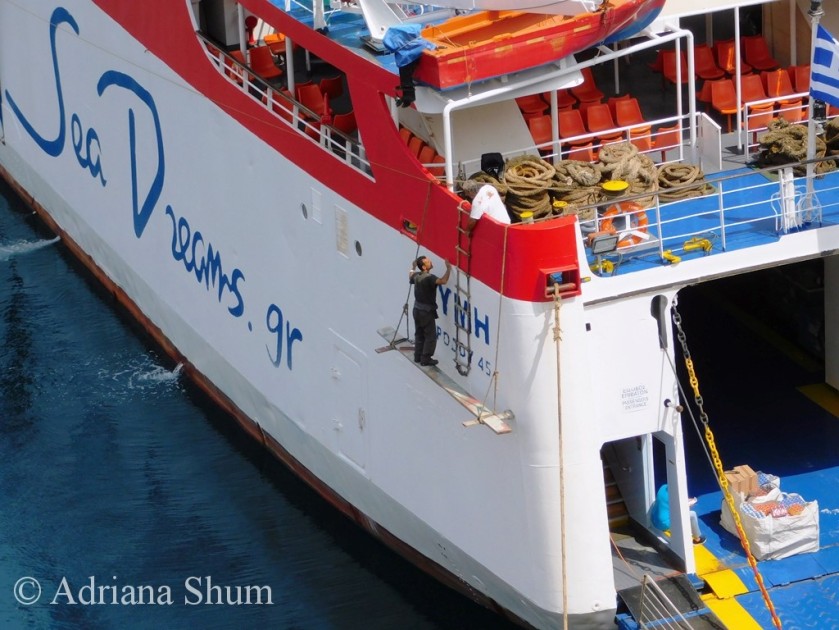

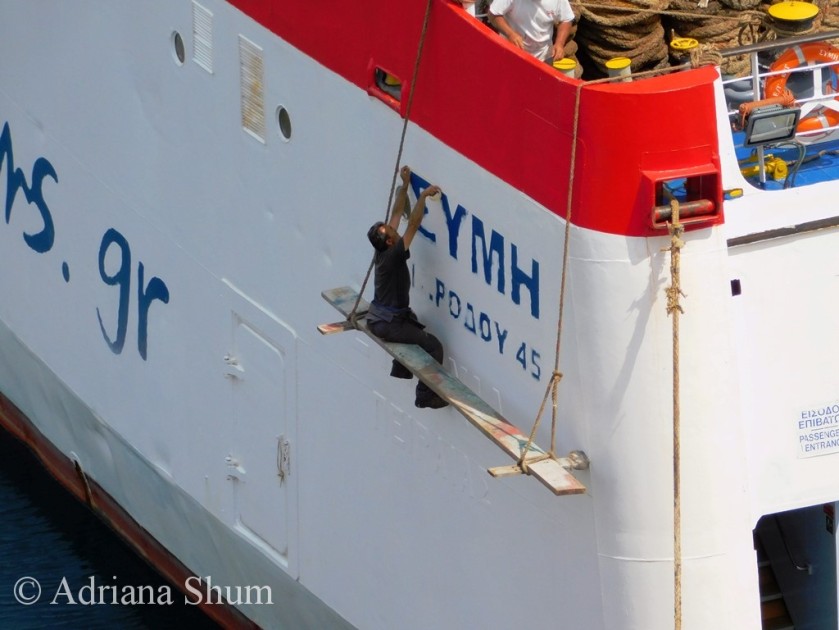

Health and safety rules do exist in Greece. I mean, once a year a road block is set up at the windmills above Yialos to check that people are using helmets when out on their motorbikes. It is illegal to use mobile phones while driving but no one pays much attention to that one either. We have all seen such Greek island classics as a motorcyclist yakking on the phone while juggling a frappe cup and a cigarette and steering with his knees as he negotiates the waterfront bends in Yialos.
Painters totter at the top of extension ladders, the bottoms of which are balanced on steep steps or out in the street with no hazard signs. Occasionally someone comes unstuck but this happens remarkably seldom. This might be because in Greece, particularly in the islands, people grow up taking responsibility for their own actions and don’t count on someone else to look out for them. If you have survived childhood sleeping on a moussandra loft with a 3 metre ladder to climb up from the stone floor below, the chances are good you have been living dangerously from the outset. Riding to school on a motorbike, clinging to dad’s back along with several other siblings, because there’s no money for a family car brings with it a confidence those of us from more sheltered backgrounds can only envy.
I watched the above sequence of events play out in Yialos yesterday morning. Harbour balconies offer fascinating insights into island life and if you can handle the steps, it is well worth spending at least your first visit to Symi in one of the neo-classical houses that form the tiers of Symi’s famous amphitheatre harbour. You may never leave your opera box vantage point for the duration of your stay. For more mesmerising harbour view observations, visit James Collins’ blog over at Symi Dream – he has to try to work with that view from his desk!
Regards,
Adriana
Welcome to my new Symi blog, Adriana’s Symi – the free range version! In some respects it will be similar to my original one on the Symi Visitor website in that it will always contain photographs snapped on my travels around the island.
Welcome to my new Symi blog, Adriana’s Symi – the free range version! In some respects it will be similar to my original one on the Symi Visitor website in that it will always contain photographs snapped on my travels around the island. There won’t be as many of the Kali Strata as my daily activities have changed with the closure of Symi Visitor Accommodation and there is no need for me to go down to the harbour with any frequency.
Where this blog will differ, however, is that as it won’t be tied to the specific business of promoting Symi as a holiday destination, I will have greater freedom in what I post and may on occasion venture to share an opinion with you. I may go ‘off piste’ so to speak.
I wrote my first Symi diary listing for the Symi Visitor website back in March 2001. Many of you reading this have probably been visiting Symi and reading my posts at least that far back. It was Wendy’s idea as a way of building up a year-round resource of what life on Symi was like at different times of the year. We hadn’t heard of blogging as a concept and there was no handy software to facilitate putting up posts. It was a case of writing 3 paragraphs and emailing them to Mike Gadd, our webmaster in the UK, who would then paste them onto a webpage for me. No digital images or fast internet connections in those days.
I seem to recall it was around 2005 when I got my first digital camera and started taking photographs to share with you all. It was a very basic Kodak and didn’t have optical zoom. It did, however, take great photographs and it fitted nicely in my pocket. It was a sad day when it fell out of said pocket and the screen shattered. Now, as I lug 600 grams of Nikon bridge camera round my neck, I rather miss the lightweight compacts of yore. No, I don’t find taking photographs with my smartphone an adequate substitute for a compact – I have to change to my reading glasses to see the screen and find the settings to activate it. By that time I will probably have been flattened by the Symi bus or fallen down the steps or the cat/goat/chicken will have moved on.
Thank you for your loyalty over the years. The Symi adventure continues and I look forward to continuing to share Adriana’s Symi with you.
Regards,
Adriana
While Greece is a fairly conservative country and sexism is rife, when it comes to food there are no gender divisions. You are as likely to see men as women picking over the produce, examining the quality and buying fruit and vegetables by the kilo.
Although we live off the grid and try to be as self-sufficient as possible, there are some things one just has to buy. Loo roll is one of them. This morning I realised we were down the last one and as tomorrow is a local holiday, the Feast of St Michael, over at Panormitis monastery, I had better make a foray this morning or hang on until Thursday.
We are very lucky in that although we live on a small holding effectively in the middle of no where we are actually only a 5 minute walk from the shops of central Chorio, the old upper village. Perfect for a non-driver such as myself.
There is a bit of a square at Kampos, the central bus stop for Chorio. More a widening of the road really than a square in the formal sense, but there is a kiosk and a bit of parking space where hawkers doing the rounds of the islands park for a few hours to sell their wares. This morning the greengrocer from Kalymnos had taken up the slot. Usually he favours the space at the back of the town square down in Yialos, Symi’s main harbour, and it is quite unusual to see him up here.
Kalymnos is a famous sponge diving island in the northern Dodecanese with a population of about 30 000 inhabitants – and a wide fertile well-watered valley called Vathi where Kalymniots grow fruit and vegetables which they sell to less fortunate islands such as Symi. There is no way we could ever grow cabbages that size with our limited water resources, stony ground and temperature extremes. Did you know that cabbages take anything up to 30 weeks to get from seedling to marketable size? A lot can go wrong in that time. A sudden rise in temperatures and they bolt. Low humidity and insufficient water and they shrivel and go leathery. A hungry caterpillar or two and there’s not much left except rabbit food. So we leave the farmers of Kalymnos to keep us in cabbages. We grow rocket, coriander, parsley and other faster and more resilient stuff that gives us a better return for our resources.
In the world of cold chains and global imports it is easy to forget that citrus fruits are actually a Mediterranean winter crop. Given enough water throughout the year, citrus trees can bear fruit and flowers simultaneously all year round but their main fruiting time is the winter. As you can see from the photograph, the first oranges are starting to appear. Not quite the radiant orange of the fully ripe but they are getting there.
Something else worth noticing in this photograph is that the shoppers are men. While Greece is a fairly conservative country and sexism is rife, when it comes to food there are no gender divisions. You are as likely to see men as women picking over the produce, examining the quality and buying fruit and vegetables by the kilo. The diet here is largely seasonal and people shop every day, deciding on what to cook based on what is available. Although the range of frozen vegetables and savoury dishes has improved somewhat in recent years, they are still too expensive for the average household to have on a regular basis. Meat, poultry and fish are treats rather than a daily event and in the winter months when most people are out of work in the islands, pulses and pasta rule the day, augmented by whatever fresh vegetables are available.
The man to the left in the photograph is a local Greek Orthodox priest. He came to the priesthood quite late in life, after the death of his wife. I don’t know the exact numbers but just counting off the priests I know, there are at least 30 on the island, serving a community of about 3000. That is pretty good considering that in countries like the United Kingdom, the clergy have declined to the point where it is the norm for one priest to be serving several different towns and villages. The priests here do move from church to church too. Symi has about 400 churches and chapels, many of which are privately owned and only used on their name days and for various dedications. They are all, however, lovingly maintained. That however, is another story for a different blog post.
This morning I woke up to an island shrouded in mist, a rose gold dawn of cockerels and damp. Autumn beckons and the weather is changing. I notice these things, not least because I sleep out of doors from June until the first rains come, sometime in October. It is too hot to sleep inside, under the tin roof with no fans to stir the stagnant air. I prefer to take my chances with the mosquitoes and wake with the sun. As we edge towards the equinox sunrise is ever later but the dawn chorus in the valley still starts long before first light, an accompaniment of crows, brays, twitters and bleats that gradually draws me to wakefulness by 6 a.m. If I should dare to sleep on, the cats come to find me and knead me into the world, demanding breakfast.
Time to head up the terraces into the house and put the percolator on the stove for the first coffee pot of the day. Coffee and the BBC news. Living off the grid is not synonymous with living in ignorance. We have a satellite dish and a basic decoder that allows us to pick up the BBC and other free-to-air stations. We watch the news every morning. The ripples of world events wash our shores and Symi has been effected by everything from global economic problems to the war in Syria and attempted coup in Turkey. We cannot pretend that because we live on a tiny island that we are safe from the vagaries of world events. The effects of climate change face me every morning as I look at dead or dying trees in my groves and orchards. Since we bought our farm in 1995 we have seen thriving almonds, apricots, peaches and pears die off due to extreme summers and dry winters. Last year our olive trees also started to die off. It is not just us. All over the island deciduous fruit and nut trees have died. Endemic conifers are also showing strain and even as far north as the island of Leros we saw dead and dying indigenous trees.

The Greek Island cliche of the tourist brochures is blue skies, calm seas, endless sunshine and idyllic beaches. That is only part of the picture. Greece, like all the other countries in the Europe, also has winter. While it seldom involves metre deep snow drifts – unless you live in northern Greece – but it does usually involve a lot of wet stuff and that, in turn, translates into a lot of green stuff. The Mediterranean climate has two defining characteristics – long hot dry summers and relatively mild wet winters with high rainfall. Spring and Autumn are such short seasons, only 2-3 weeks between Summer and Winter that they hardly register at all in Southern Greece. We would not survive those summer droughts without the winter rains and on naturally arid islands like Symi which have no springs or rivers, harvesting the winter rains in cisterns has been a way of life for thousands of years.
If you have only ever been to Greece in the popular summer months of July, August and September you may find it hard to imagine a landscape of wild cyclamens and silvery asphodels, bright green annual grasses and waist high corona daisies. The first rains usually fall sometime in October, around the same time that the squills start punching through the sunbaked earth to remind us that Persephone is on her way back to Hades. Within a day or so a delicate green bloom tinges the rocky landscape as dry scrubby herb bushes regreen and grass seeds germinate. The wild cyclamens poke small heart shaped leaves out of stony terrace walls and rocky hillsides. The delicately scented pale pink flowers follow later, in February and March. By April the country is a riot of flowers as nature pushes to complete complex life cycles before the first heatwaves of May and June bake the earth.
It is quite possible to see no rain at all between mid March and early November but most years the drought on Symi lasts from April to late October. A long time without water.
The next time you look at a photograph of gleaming white Cycladic houses against a brilliantly blue sky and sea, remember the other Greece. The wintry green one of rain and cyclamens.
A brief introduction to life off the grid.
When Nicholas and I bought our first boat, a 23 foot wooden ketch called Frolic, back in February 1981, little did we realise that this would eventually lead to a lifestyle that is far from conventional and a long way from our starting point as white middle class South African graduates.
Home is now the small Greek island of Symi in the Dodecanese, about 25 nautical miles north of Rhodes and within spitting distance of the Turkish coast. We have lived off the grid for decades now, experimenting with a permaculture-inspired lifestyle that aims to be as self-sufficient as possible. We try to grow as much of our own food as we can, despite having settled on an island that is famously dry and has more perpendicular surfaces than horizontal ones. Every year brings its challenges, particularly as Symi is seeing the effects of climate change as the summer drought grows ever longer.
I have been blogging Symi since 2001 as part of my work for Symi Visitor Accommodation but I am often asked to write about aspects of living here on a more personal level. This is for those of you who are more interested in how one can live all year round without mains electricity than what life is like for tourists visiting the island.